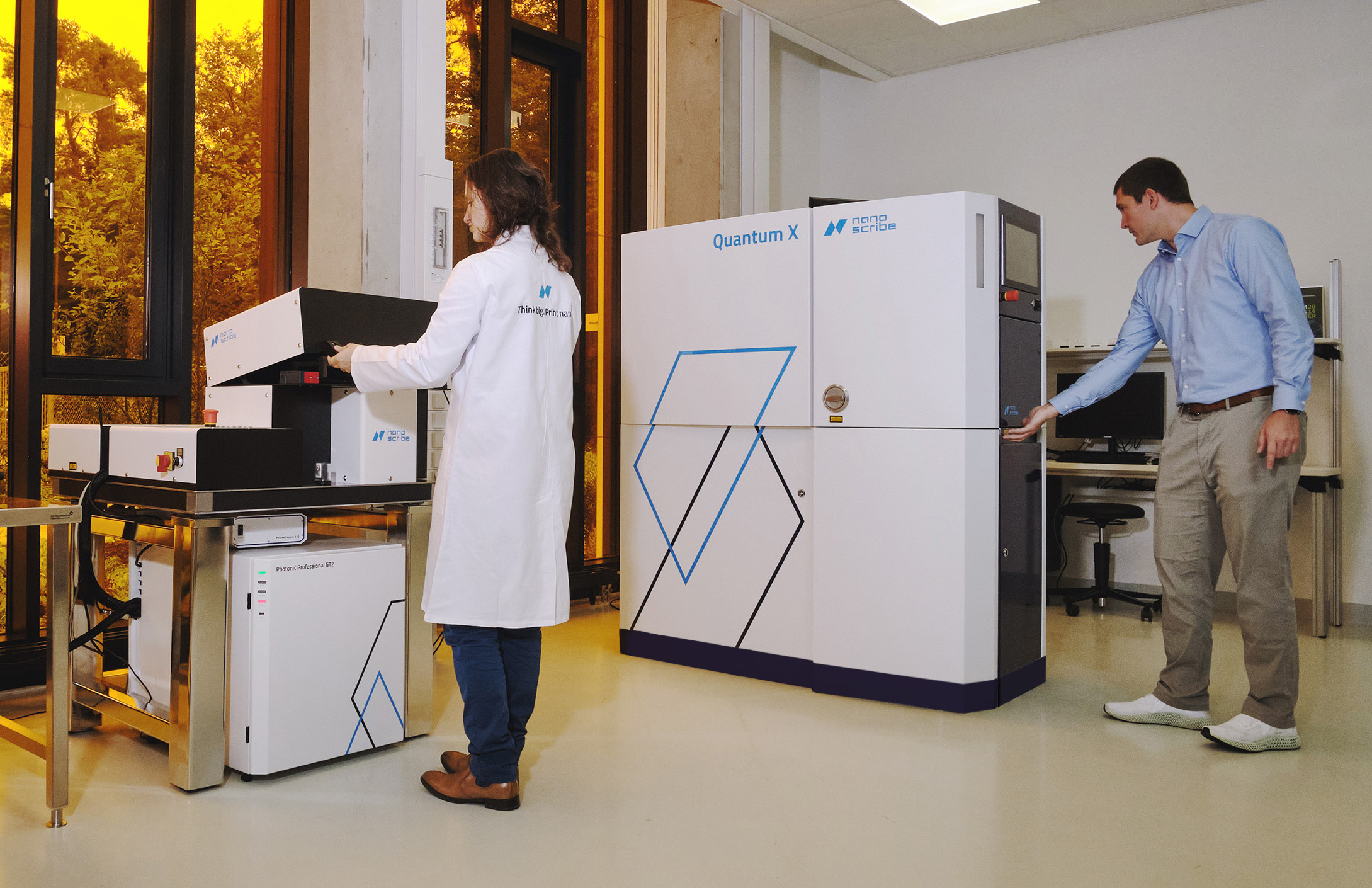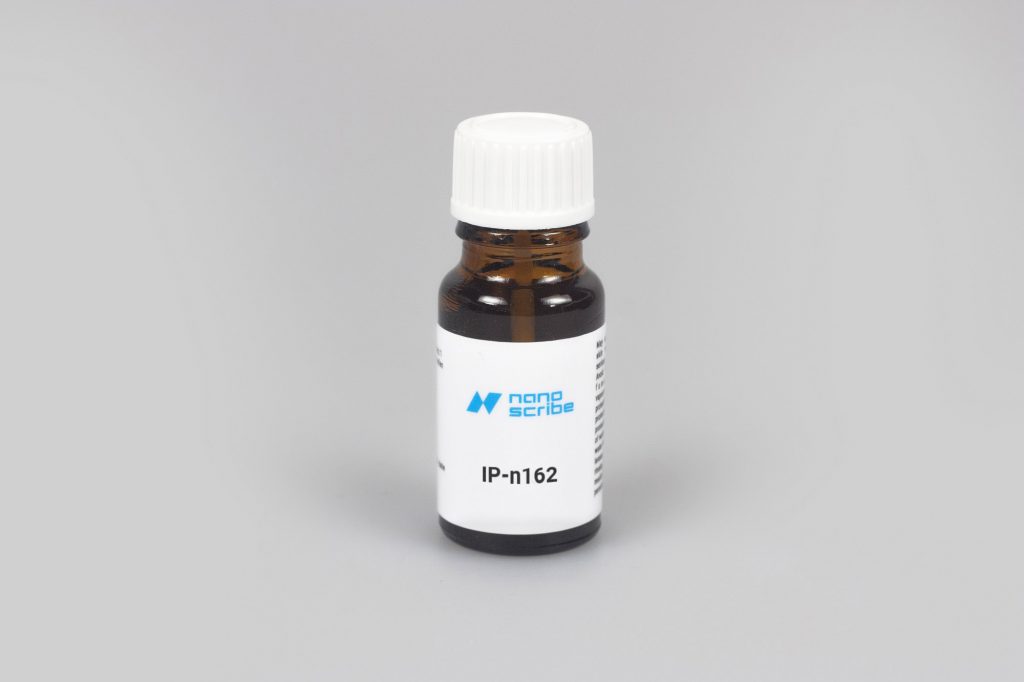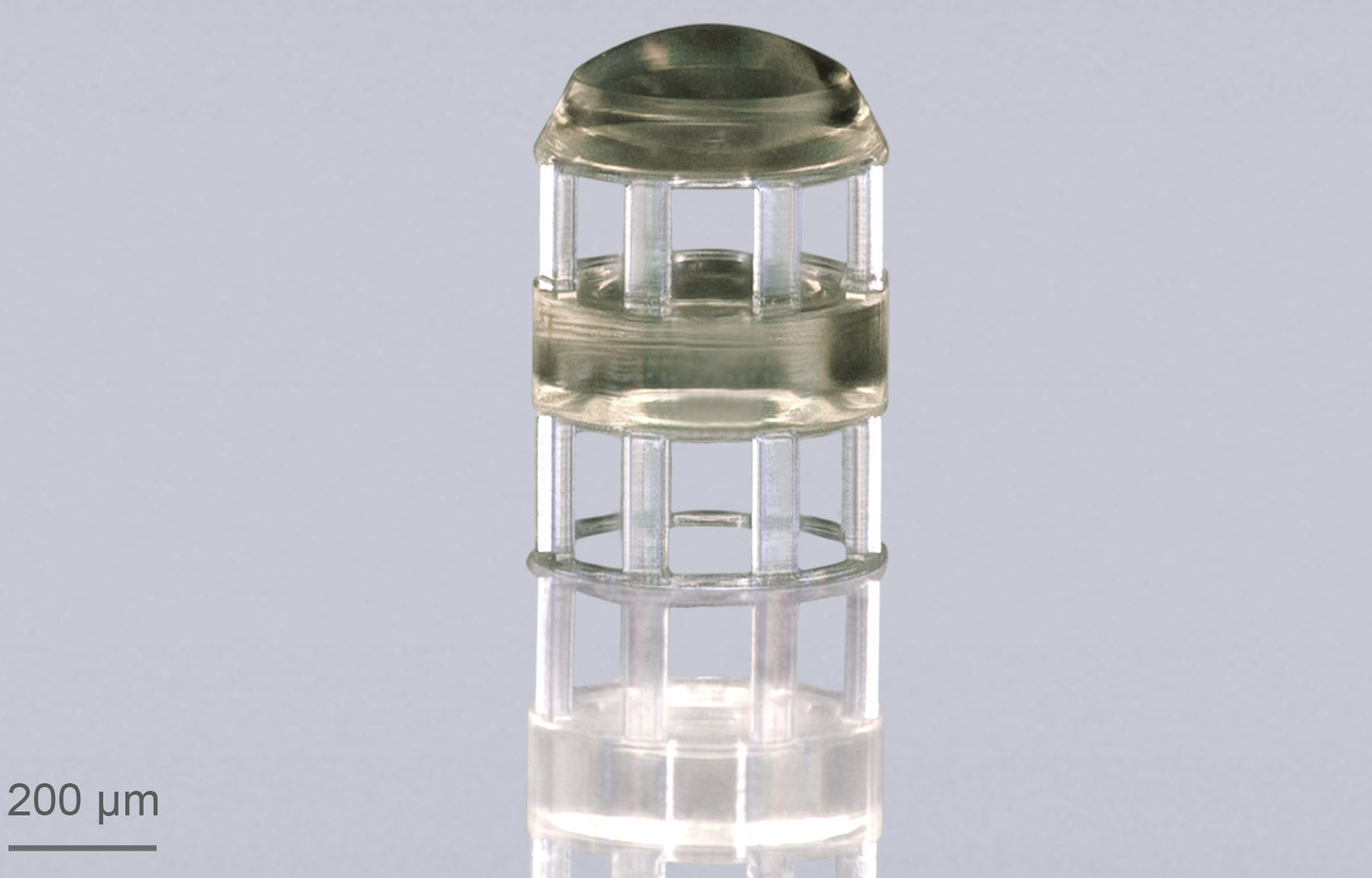Nanoscribe, a German manufacturer of two-photon 3D printers, has released a new photoresin which it says will take fabricating micro-optical elements “to the next level.”
The company’s novel printing material, IP-n162, features a high refractive index and disperses easily, properties that are particularly beneficial for 3D microfabrication. The resin’s low absorption rate when exposed to infrared (IR) light, also makes it well-suited to creating IR micro-optics such as optical communication products and photonic packaging.

Nanoscribe’s microfabrication 3D printing technology
Nanoscribe specializes in the production of nano, micro, and mesoscale additive manufacturing devices. The company’s existing line of systems includes its Photonic Professional GT, GT 2, and Quantum X 3D printers, each of which are powered by its proprietary two photon polymerization (2PP) technology.
Within the 2PP microfabrication process, a laser is used to cure part of a fluid photosensitive material, solidifying it in a layer-by-layer approach. Leveraging the advanced technique, products can be produced with a level of resolution as low as 200 nanometers, which in turn, can be reverse-molded for optic and electronic applications.
The company has consistently sought out new uses for its microfabrication technology, and it established a subsidiary company at the ZEISS Innovation Center in Shanghai with this goal in mind. More recently, Nanoscribe joined MiLiQuant, a three-year project which aims to develop diode laser-based light sources. The consortium includes a range of organizations such as Bosch, Q.ANT, Paderborn University, and Johannes Gutenberg University.
Following the release of its latest photoresin, Nanoscribe has continued to work with industry partners to develop new micro-optical applications for its proprietary 2PP systems.

The IP-n162 micro-optic 3D printing material
Nanoscribe’s latest photoresin has been custom-made to enable users of its proprietary 2PP 3D printing technology to manufacture objects with more advanced optical designs. The material’s refractive index of 1.62 at a wavelength of 589 nm, is the highest in Nanoscribe’s resin portfolio and allows it to maintain a high level of shape accuracy.
IP-n162’s low Abbe number of 25 is now also the highest in the company’s range, and this provides it with dispersive qualities during printing. Consequently, the optical properties of structures printed with IP-n162 are reportedly close to those of the optical polymers typically used within injection molding and behave similarly to polycarbonate or polyesters.
As a result, the resin is capable of producing freeform shapes at a microscale, making it a cost and time-effective alternative to iterative fabrication methods such as injection molding or diamond milling. Once combined with elements made of a lower refractive index, Nanoscribe’s new material can also be used to fabricate achromatic optical systems.

Leveraging the refractive polymer, it could now be possible to create lenses that transmit light without separating it into constituent colors, potentially improving the display quality of devices such as cameras or projectors. Matthias Kraus, a scientific researcher at the University of Applied Sciences in Jena, has pilot-tested IP-n162 in a range of similarly novel optical applications.
“Other currently commercially available resins are too similar in their refractive indices, which limits innovations in micro-optical systems,” said Kraus. “IP-n162 has promising optical properties to develop a useful achromatic system required, for example for display devices, ultra-sensitive detectors, and could even be used in medical applications.”
Kraus went on to create a complex optical system, which used an integrated diffractive lens to achieve a distortion-free image. The refractive index of IP-n162 reportedly enabled him to make these steps smaller and to reduce any stray light within the device.
In order to develop further healthcare-related uses for its new resin, Nanoscribe is also working with the University of Stuttgart, and medical and micro-optical firms Karl Storz and PRINTOPTICS.
“A high refractive index photoresin like IP-n162 gives the designer additional freedom to create lenses that are more powerful, thinner, less curved, more compact,” added Simon Thiele, CTO of PRINTOPTICS. “They can also be 3D printed faster and cheaper.”
Nominations for the 2020 3D Printing Industry Awards are still open, let us know who is leading the industry now.
The fourth edition of the 3D Printing Industry Awards Trophy Design Competition is now underway. Enter your design for the chance to win a CraftBot Flow 3D printer.
To stay up to date with the latest 3D printing news, don’t forget to subscribe to the 3D Printing Industry newsletter or follow us on Twitter or liking our page on Facebook.
Are you looking for a job in the additive manufacturing industry? Visit 3D Printing Jobs for a selection of roles in the industry.
Featured image shows a microscale 3D print. Photo via Nanoscribe.



